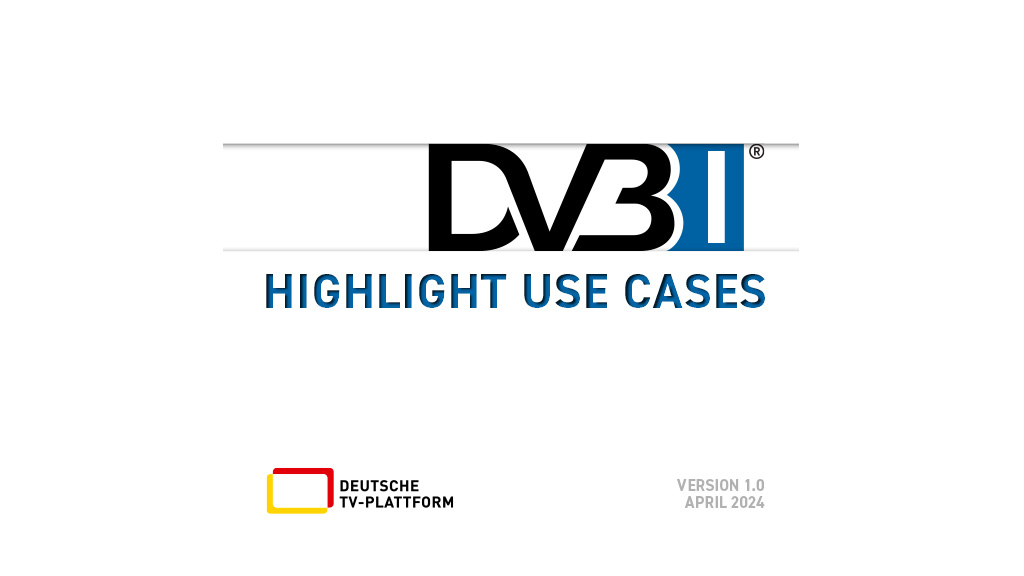The German television industry association Deutsche TV-Plattform has produced an overview of possible use cases for the DVB-I specification for service discovery. It is aimed at decision makers involved across the television value chain, as well as end-users, to show them the potential of DVB-I.
The German television platform is an association of over 50 members, including private and public broadcasters, streaming providers, device manufacturers, internet companies, infrastructure operators, service and technology providers, research institutes and universities, federal and state authorities, and other companies, associations and institutions involved in digital media. Since its founding in 1990, the aim of the registered association has been the introduction of digital technologies based on open standards.
The brief report highlights the use cases for DVB-I, which is currently being tested in the German market. Notably, the contributors include not only those that have been involved in such trials but also other key players like Deutsche Telekom and Vodafone.

The first observation is that DVB-I transfers the familiar user experience of traditional television to online video. As a comprehensive content discovery standard, DVB-I is a logical extension of classic cable, satellite and terrestrial transmission technologies to online distribution. DVB-I enables familiar and convenient television viewing for an increasing number of television users that only connect their sets to the internet.
DVB-I supports the discoverability of programmes, ensuring the prominence of public value programming, including services specific to a particular region.
As an open standard, DVB-I maintains existing retail market models and ensures the open implementation and interoperability of the standard for service providers and the manufacturers of end devices. National markets also benefit from the deployment of an international standard.
Being independent of network distribution technologies, DVB-I can be the central entry point to a uniform channel list across all modes of reception. It also offers a way to migrate users from traditional transmissions systems to online services.
The hybrid approach of DVB-I allows a flexible combination and prioritization between broadcast and online distribution. This can be balanced to deliver services in the most economical and environmentally friendly mode.
Using DVB-I, additional features such as additional audio tracks and access services like sign language can be delivered online. It is also possible to deliver 4K or even 8K versions online. Links from programme guides can be made directly to the on-demand programme libraries of broadcasters.
Linear and non-linear services can be linked, for instance allowing viewing to restart from the beginning of the current programme.
Playlists can be supported to organise and present programmes and provide another way to navigate programming.
Viewers can access services across different devices and displays with a consistent user experience.
Media providers can potentially integrate user authentication to support subscription services with encrypted programming. Targeted advertising with server-side and client-side substitution of advertising can also be supported.
The report shows the potential for DVB-I in the German market and beyond. It marks the start of an engagement with the wider industry beyond the initial proof of concept trial services to appreciate the practical and commercial potential of the standard.
The report, DVB-I Highlight Use Cases is available in German from the infothek section of the Deutsche TV-Plattform web site.
